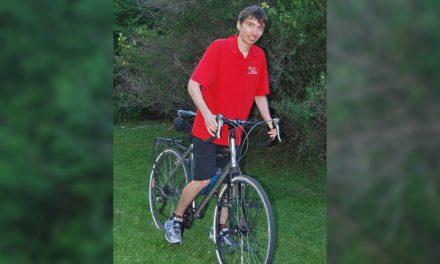HALO Director Dr. Mark Tremblay is co-author on a paper, “Validation of parent-reported physical activity and sedentary time by accelerometry in young children,” that was recently published in BMC Research Notes. Citation details and a summary of the paper are below.
Sarker H, Anderson LN, Borkhoff CM, Abreo K, Tremblay MS, Lebovic G, Maguire JL, Parkin PC, Birken CS; TARGet Kids Collaboration. Validation of parent-reported physical activity and sedentary time by accelerometry in young children. BMC Res Notes. 2015 Nov 30;8(1):735. doi: 10.1186/s13104-015-1648-0.
ABSTRACT: Background. It is unknown if young children’s parent-reported physical activity and sedentary time are correlated with direct measures. The study objectives were to compare parent-reported physical and sedentary activity versus directly measured accelerometer data in early childhood. Methods. From 2013 to 2014, 117 healthy children less than 6 years of age were recruited to wear Actical accelerometers for 7 days. Accelerometer data and questionnaires were available on 87 children (74 %). Average daily physical activity was defined as the sum of activity ≥100 counts per minute, and sedentary time as the sum of activity <100 counts per minute during waking hours. Parents reported daily physical activity (unstructured free play in and out of school, and organized activities) and selected sedentary behaviors (screen time, stroller time, time in motor vehicle). Spearman correlation coefficients and Bland–Altman plots were used to assess the validity of parent-reported measures compared to accelerometer data. Results. Total physical activity was significantly greater when measured by accelerometer than parent-report; the median difference was 131 min/day (p < 0.001). Parent-reported child physical activity was weak to moderately correlated with directly measured total physical activity (r = 0.39, 95 % CI 0.19, 0.56). The correlations between types of physical activity (unstructured free play in and outside of school/daycare, and organized structured activity) and accelerometer were r = 0.30 (95 % CI 0.09, 0.49); r = 0.42 (95 % CI 0.23, 0.58); r = 0.26 (95 % CI 0.05, 0.46), respectively. There was no correlation between parent-reported and accelerometer-measured total sedentary time in children (r = 0.10, 95 % CI −0.12, 0.33). When the results were stratified by age group (<18, 18–47, and 48–70 months of age) no statistically significant correlations were observed and some inverse associations were observed. Conclusions. The correlation between parent-report of young children’s physical activity and accelerometer-measured activity was weak to moderate depending on type of activity and age group. Parent-report of children’s sedentary time was not correlated with accelerometer-measured sedentary time. Additional validation studies are needed to determine if parent-reported measures of physical activity and sedentary time are valid among children less than 6 years of age and across these young age groups.
Click here to read the paper in full for free.



